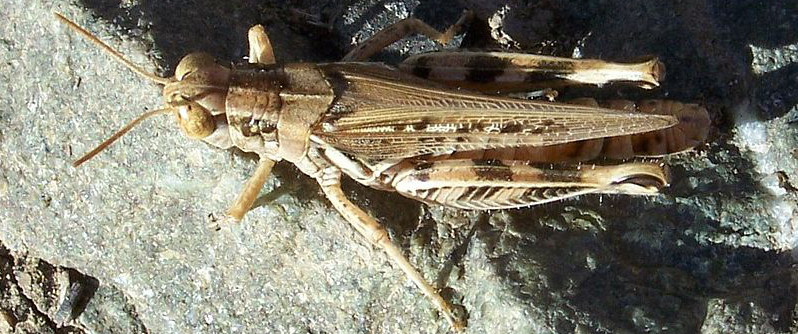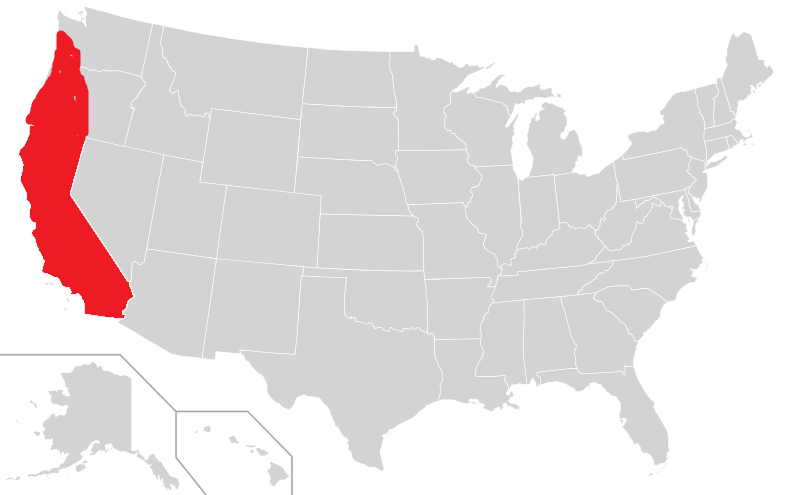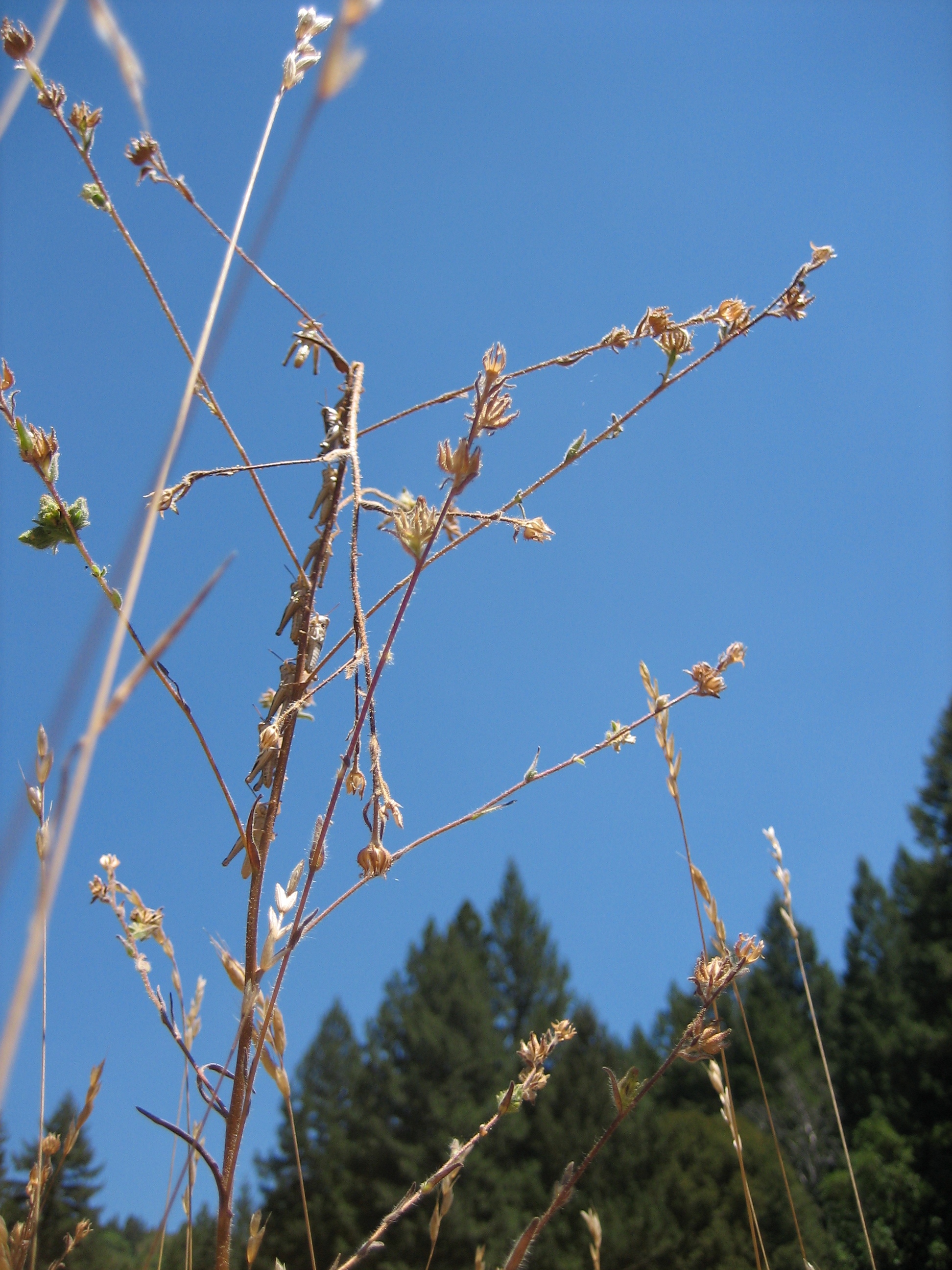
Habitat
The Melanoplus devastator is a native species to North
America and no recorded case of them has been seen outside of
North America. More specific ally these large grasshoppers live
on the western coast of the United States. The states they
occupy include California, Oregon, Nevada, and Washington. This
area in the U.S. has been classified as a ‘biodiversity hotspot’
and the devastating grasshopper is part of that diversity in
these places. The devastating grasshopper lives mostly in the
Central Valley and northwards along a narrow land strip to
Oregon (Roff and Mousseau 2005). The Central Valley is a large
flat valley that takes up most of the middle state of California
and is surrounded by the Cascade, Sierra Nevada, and the
Tehachapi mountain ranges. It w
ally these large grasshoppers live
on the western coast of the United States. The states they
occupy include California, Oregon, Nevada, and Washington. This
area in the U.S. has been classified as a ‘biodiversity hotspot’
and the devastating grasshopper is part of that diversity in
these places. The devastating grasshopper lives mostly in the
Central Valley and northwards along a narrow land strip to
Oregon (Roff and Mousseau 2005). The Central Valley is a large
flat valley that takes up most of the middle state of California
and is surrounded by the Cascade, Sierra Nevada, and the
Tehachapi mountain ranges. It w as seen throughout multiple
studies that these grasshoppers prefer to live in low
altitudinal settings, especially along the foothills of the
Sierra Nevada and the along coast of Monterey Bay to just north
of Las Angeles (Dingle and Mousseau 1993).
as seen throughout multiple
studies that these grasshoppers prefer to live in low
altitudinal settings, especially along the foothills of the
Sierra Nevada and the along coast of Monterey Bay to just north
of Las Angeles (Dingle and Mousseau 1993).
The
grasshoppers prefer the heat and will die if they live in
undesirably cold weather for too long. For these reasons the
devastating grasshopper is seen at lower elevations and at the
foothills in the Central Valley (Tatar et al. 1997).
This preference can be seen in the clines that are maintained
between the Melanoplus devastator and the M.
sanguinipes (Orr 1996). The clines refer to a species
boundary that is marked along the sides of the Sierra Nevada,
and is prominent by looking at species morphology. The M.
sanguinipes is a sibling species to the M. devastator
(Roff and Mousseau 2005.). The two sibling species are closely
related because they share many of the same characteristics with
only a few life history and reproduction traits being different
about them.
The Melanoplus devastator has to adapt to the
environment in which it lives. The weather and climate that it
is exposed to has a wide range of both summer and winter
conditions (Dingle and Mousseau 1993). During the summer, this
grasshopper has to adapt to the long and dry months in a unique
way. These grasshoppers go through a reproductive diapause in
the hot mid-summer months (Orr 1996). This is addressed in
further detail in the Form and
Function section. In the winter months, the grasshoppers
have to lay their eggs in the soil, away from the cold. If the
eggs come into contact with snow or the freezing soil, they will
die and there is no way for any of them to hatch once the
weather warms. (Roff and Mousseau 2005.).
and winter
conditions (Dingle and Mousseau 1993). During the summer, this
grasshopper has to adapt to the long and dry months in a unique
way. These grasshoppers go through a reproductive diapause in
the hot mid-summer months (Orr 1996). This is addressed in
further detail in the Form and
Function section. In the winter months, the grasshoppers
have to lay their eggs in the soil, away from the cold. If the
eggs come into contact with snow or the freezing soil, they will
die and there is no way for any of them to hatch once the
weather warms. (Roff and Mousseau 2005.).
The devastating grasshoppers are unique to a specific area,
making them vulnerable to the climate and weather that happen in
their specific area. They have made certain adaptions to the
area in which they live and have made it a specific area for
them. This being said, it is hard to find this grasshopper
outside of its rangeland habitat in the northwestern part of the
United States since the Melanoplus devastator has become very
specialized to its habitat. One of the main adaptions that has
occurred is reproductive diapause in the females, making this
adaption special to them and a very important factor in how they
reproduce and survive in the environment in which they thrive.
Go back to classification Home Page Move on to Form and Function